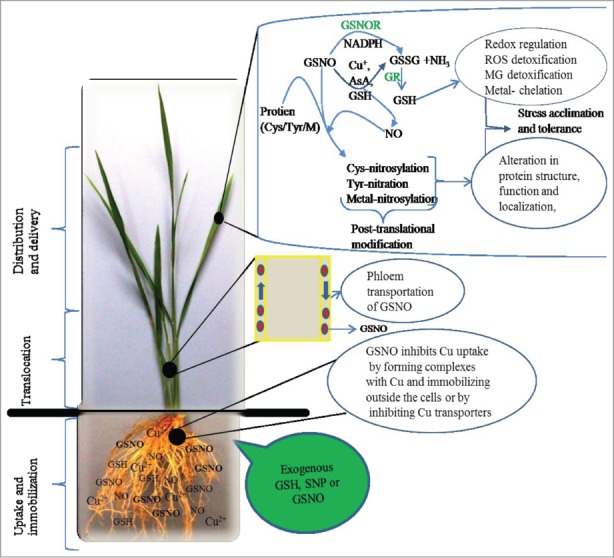Figure 2.

Possible mechanism of exogenous GSNO-mediated Cu tolerance in rice seedlings. Exogenous application of GSH and SNP can produce GSNO in presence of O2. GSNO can inhibit metal uptake by forming complexes with Cu. GSNO can be uptaken by the root and transported to the upper parts through phloem. GSNO can be decomposed to GSSG and NH3 by the GSNOR using NADPH. Alternatively, GSNO can be broken down to NO and GSSG in presence of reductants such as Cu+, AsA and GSH. GSSG can be converted to GSH by GR. GSH can then play important role in stress tolerance through redox regulation, ROS and MG detoxifications, and metal chelation. On the other hand, GSNO can transfer the NO to Cys, Tyr or metals of proteins, a process known as post translational modification, which can modify the function of a broad spectrum of proteins leading to stress tolerance.
